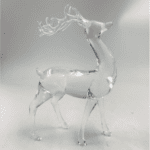Have you ever played in your backyard after a rainy day and gotten mud all over yourself? It can be so much fun to jump in puddles and play in the rain, but it’s not always easy to clean up afterwards. Sometimes, mud gets stuck on our clothes, shoes, and even the ground! If you’re tired of looking at muddy patches in your backyard, don’t worry – there are ways to cover them up!
One way to cover up mud in your backyard is by using grass seed. Grass grows quickly and will eventually cover up any bare spots where mud used to be. You can buy grass seed from a hardware store or garden center and sprinkle it onto the mud. Make sure to water the area regularly and keep an eye out for sprouts! Another option is to use mulch or wood chips. These materials can be spread over muddy areas like a blanket, covering them completely. Not only does this help with the appearance of your backyard, but it also helps prevent further erosion caused by rainwater washing away soil.
Understanding The Causes Of Mud In Your Backyard
Muddy backyards can be a real bother. It’s important to understand the causes of mud in your backyard so that you can take steps to prevent it from happening in the future.
One common cause of mud is heavy rainfall or irrigation. When water doesn’t have anywhere to go, it collects on the surface and creates muddy areas. Another cause could be poor drainage, which traps water and makes it difficult for it to soak into the soil.
To prevent mud, try building up low spots with soil or installing drainage systems like French drains or dry wells. Additionally, consider adding plants and grasses that are specifically suited for wet conditions.
Now that we know some causes of mud and how to prevent it, let’s assess just how bad our own backyard situation might be.
Assessing The Extent Of The Problem
Assessing the Extent of the Problem:
Now that you have noticed mud in your backyard, it is important to assess how much area has been affected. Assessing drainage can help determine if there are any underlying issues causing excess water to accumulate in certain areas. If left untreated, this could lead to further problems such as erosion or flooding.
Soil quality testing can also be helpful in determining the extent of the problem. Testing for pH levels and nutrient content can provide insight into whether or not the soil is healthy enough to support vegetation growth. This information will be useful when deciding what steps need to be taken next in order to cover up the mud and prevent it from reoccurring.
By assessing drainage and conducting soil quality testing, you will have a better understanding of why the mud is occurring and what measures need to be taken moving forward. With this knowledge, you can move on to removing excess mud and debris without fear of creating further damage.
Removing Excess Mud And Debris
To make sure your backyard stays in pristine condition, it’s important to remove any excess mud and debris that may have accumulated. This not only improves the overall appearance of your outdoor space but also prevents potential hazards such as slips and falls.
Removing debris can be done by using a rake or broom to gather up any loose sticks, leaves, or rocks that are scattered across the affected area. Once everything has been collected into a pile, use gloves to dispose of them properly in a trash bag to avoid attracting pests.
Mud prevention tips include laying down mulch or gravel on high-traffic areas to reduce soil erosion and minimize the amount of mud created. Additionally, consider installing walkways made of stone or concrete to provide stable footing for yourself and guests while traversing through the yard.
Leveling The Affected Area
Now that you have removed the excess mud and debris from your backyard, it’s time to level out the affected area. You can do this by using grading techniques such as raking or shoveling soil around until it is even with the rest of the yard. It’s important to make sure that all areas are leveled evenly so that water doesn’t pool in one spot.
Another factor to consider when leveling your backyard is soil composition. Different types of soil may require different methods for leveling, so it’s important to know what kind of soil you’re working with. Sandy soils tend to be easier to level than clay soils, which can become compacted and difficult to work with. If you find yourself struggling with a particularly stubborn patch of mud, adding some topsoil or sand may help improve drainage.
Now that your backyard is leveled out and free of excess mud, you can start thinking about applying grass seed to cover up any remaining bare spots. This will not only improve the appearance of your yard but also help prevent future erosion and keep your lawn healthy. Keep reading for tips on how to properly apply grass seed and encourage growth in your newly-leveled backyard!
Applying Grass Seed To Cover Up Mud
After covering up the mud in your backyard, it’s time to start thinking about how you can plant grass seed to make sure that the area stays covered and looks nice. Applying grass seed is a great way to ensure that your backyard remains green and healthy all year round.
One of the best ways to apply grass seed is through overseeding techniques. This involves spreading the seed over an existing lawn or patchy areas of soil. By doing this, you’ll be able to cover any bare spots on your lawn while also promoting new growth.
When choosing grass types for mud-prone areas, it’s important to look for varieties that are hardy and drought-resistant. Some of the best options available include tall fescue, Bermuda grass, and Kentucky bluegrass. These types of grasses have deep roots which allow them to grow well even in challenging environments.
Watering And Fertilizing The Grass
Now that you have applied grass seed to cover up the mud in your backyard, it is important to properly care for and maintain your new lawn. One way to do this is by watering it regularly and fertilizing as needed.
Watering is crucial for the growth of healthy turfgrass. The amount of water required will depend on factors such as temperature, humidity, and soil type. It’s best to water deeply but infrequently, allowing the soil to dry out slightly between each watering. This encourages deeper root growth and helps prevent shallow roots which can lead to stress during drought conditions.
Fertilization is also important for maintaining a lush green lawn. Before applying fertilizer, consider aerating your lawn first as this allows nutrients and water to better reach the roots. Additionally, it’s important to test your soil pH levels before applying any fertilizer as different types may be more effective at certain pH levels. By understanding these two key elements – benefits of aerating and importance of soil pH – you’ll be well on your way to a thriving backyard oasis!
-
Benefits of Aerating:
-
Promotes deeper root growth
-
Helps reduce soil compaction
-
Importance of Soil pH:
-
Affects nutrient availability
-
Too acidic or alkaline soils can cause deficiencies in essential nutrients
-
Can impact plant growth
-
Certain plants thrive best at specific pH ranges
With proper watering and fertilization practices, along with understanding the benefits of aerating and importance of soil pH levels, you can ensure a healthy lawn all year round! In the next section we will discuss using mulch or wood chips as another option for covering up muddy areas in your yard.
Using Mulch Or Wood Chips As A Cover-Up
If you’re looking for a great way to cover up mud in your backyard, using mulch or wood chips can be an effective solution. Mulch comes in different types such as bark, leaves, and grass clippings, whereas wood chips are made from tree branches or trunks that have been chipped into small pieces. Both of these options offer many benefits over other alternatives.
Using mulch can help retain moisture in the soil, suppress weed growth, and regulate soil temperature. Bark mulch is particularly good at preventing erosion on slopes since it’s heavier than some other types of mulch. Wood chips also provide similar advantages while adding nutrients to the soil as they decompose.
Wood chips have several advantages over traditional gravel or rocks used for landscaping too. Since they come in various sizes and colors, you can choose something that fits your aesthetic preferences better. They’re versatile and easy to work with; however, keep in mind that they may need replacing every few years depending on their quality.
If you want a more permanent solution for covering up mud in your backyard area, building a patio or deck could be another option worth considering. Not only will this add value to your property but it’ll make your outdoor space more functional and enjoyable year-round!
Building A Patio Or Deck
If you’re looking for a more permanent solution to cover up mud in your backyard, consider building a patio or deck. Both options have their pros and cons, as well as varying costs depending on the materials used and whether you choose to DIY or hire a professional.
A deck is typically built raised off the ground and made of wood or composite materials. It’s great for sloped yards and can provide a nice view. However, it may require more maintenance over time and could be slippery when wet. A patio, on the other hand, is usually made of concrete or pavers and sits directly on the ground. It’s easier to clean but might not work as well on uneven terrain.
When deciding between a deck vs. patio, cost comparison is important to consider. Generally speaking, decks tend to be more expensive due to the need for additional support structures like posts and beams. Patios are often less expensive upfront but may require ongoing maintenance such as sealing cracks or replacing broken pavers.
DIY vs. hiring a professional is another factor to weigh before making your decision. If you have experience working with tools and construction projects, tackling a DIY project could save money in labor costs. However, if you lack confidence in your skills or don’t have much spare time, it might be better to hire someone who knows what they’re doing.
- Building a deck requires specialized tools like saws and drills.
- Patios offer more customization options with different types of stones/pavers available.
- Decks can add value to your home by providing an outdoor entertainment space.
- Patios are excellent for hosting BBQs or outdoor dinner parties.
So which option is best for your backyard? Consider factors such as budget, terrain, personal preferences/style, and how much upkeep you’re willing/able to do yourself before making a final decision.
As we move forward into installing pavers or stones in our backyard oasis makeover journey – these options can create a beautiful, long-lasting solution to cover up any mud problems you may have.
Installing Pavers Or Stones
Choosing materials for your backyard can be a fun and exciting process. When it comes to covering up mud, you have many options available. One popular choice is installing pavers or stones.
Pavers come in various shapes, sizes, and colors, allowing you to create a unique design that complements your home’s aesthetic. Stones are also an excellent option as they add a natural look to your backyard. Both materials are durable and long-lasting, making them ideal for high traffic areas like walkways or patios.
Hiring professionals to install pavers or stones ensures that the job is done correctly and efficiently. They have the necessary tools and expertise to complete the project quickly, saving you time and effort. Plus, professional installation guarantees that your new backyard addition will last for years to come!
Maintaining Your Backyard To Prevent Future Mud Issues
Now that you have installed pavers or stones in your backyard, it’s important to maintain them properly. This will prevent mud issues from arising again. Preventive measures are key to avoiding future problems.
One of the most crucial preventive measures is ensuring proper drainage. Make sure that water flows away from your house and towards a nearby drain or slope. If necessary, you can install additional drainage solutions such as French drains or dry wells.
Regularly cleaning your pavers or stones also helps prevent mud buildup. Sweep away any debris, leaves, or dirt that may accumulate on the surface of the stones. Additionally, consider using a power washer once every few months to remove any stubborn stains. With these simple steps, you can keep your backyard looking great and free of muddy messes!
Frequently Asked Questions
How Do I Prevent Mud From Forming In My Backyard In The First Place?
If you want to keep your backyard from becoming a muddy mess, there are some landscaping tips that can help. One solution is to use gravel. Gravel helps water drain away and prevents mud from forming. You can also plant grass or other plants that have deep roots which will absorb the moisture in the soil before it turns into mud. Another option is to create pathways with pavers or stepping stones so people can walk without disturbing the ground too much. By using these simple solutions, you can prevent mud from forming in your backyard and enjoy a clean outdoor space all year round!
Can I Use Artificial Turf To Cover Up Mud Instead Of Grass Seed?
Using artificial turf can have its advantages and disadvantages when it comes to covering up mud in your backyard. One advantage is that it requires less maintenance than grass seed, which needs regular watering and mowing. However, a disadvantage is that it may not look as natural or appealing as real grass. Additionally, artificial turf can be more expensive upfront compared to buying grass seed. It’s important to weigh the pros and cons before deciding whether artificial turf is the right choice for your backyard.
What If My Backyard Is Sloped Or Uneven? Will Leveling The Affected Area Still Work?
If your backyard is sloped or uneven, you may need to use retaining walls and drainage systems to level the affected area before covering up mud. Sod installation and hydroseeding are two options for adding grass to a leveled yard. However, it’s important to make sure the soil has proper drainage beforehand. If left untreated, water could collect in certain areas and cause more problems down the line.
How Can I Make Sure My Grass Seed Grows Properly And Doesn’t Wash Away With Rain?
To make sure your grass seed grows properly and doesn’t wash away with rain, there are a few things you can do. First, try using straw mulch to help keep the seeds in place. This will also help retain moisture for the newly planted grass. When watering, make sure to use a gentle spray so that you don’t disturb the soil or move the seeds around too much. Watering in the morning is best because it gives the grass time to dry before nighttime when cooler temperatures and higher humidity levels can lead to fungal growth. With these techniques, your new lawn should be off to a great start!
Are There Any Eco-Friendly Options For Covering Up Mud Besides Using Mulch Or Wood Chips?
Are you looking for eco-friendly alternatives to cover up mud in your backyard? You can try making a DIY mudroom using materials like gravel, sand, or crushed stone. These options are not only eco-friendly but also provide good drainage and prevent mud from forming. Additionally, they are easy to install yourself without the need for professional help. So if you’re tired of constantly dealing with muddy areas in your yard, consider these simple and sustainable solutions for an attractive and functional outdoor space.
Conclusion
So there you have it – some tips on how to cover up mud in your backyard! Remember that prevention is key, so try to address any drainage issues or consider using hardscaping materials like gravel or pavers. If you do decide to go with grass seed or artificial turf, make sure the area is level and follow proper planting instructions.
And if you’re looking for a more eco-friendly option, consider using native plants or wildflowers instead of traditional lawn grass. These can help promote biodiversity and attract pollinators while also reducing water usage and runoff. With a little bit of effort and creativity, you can transform your muddy backyard into a beautiful outdoor space that everyone will enjoy!


